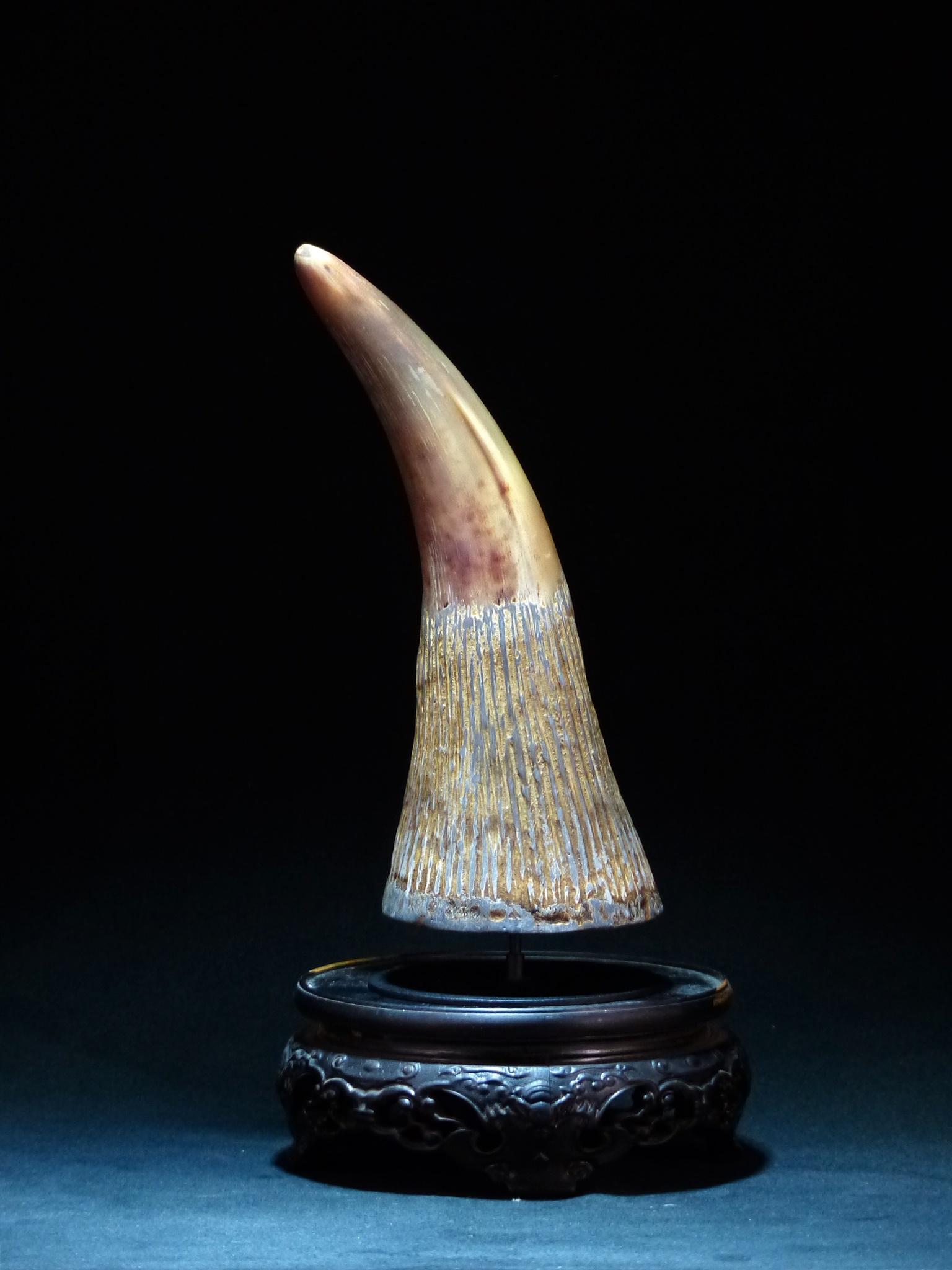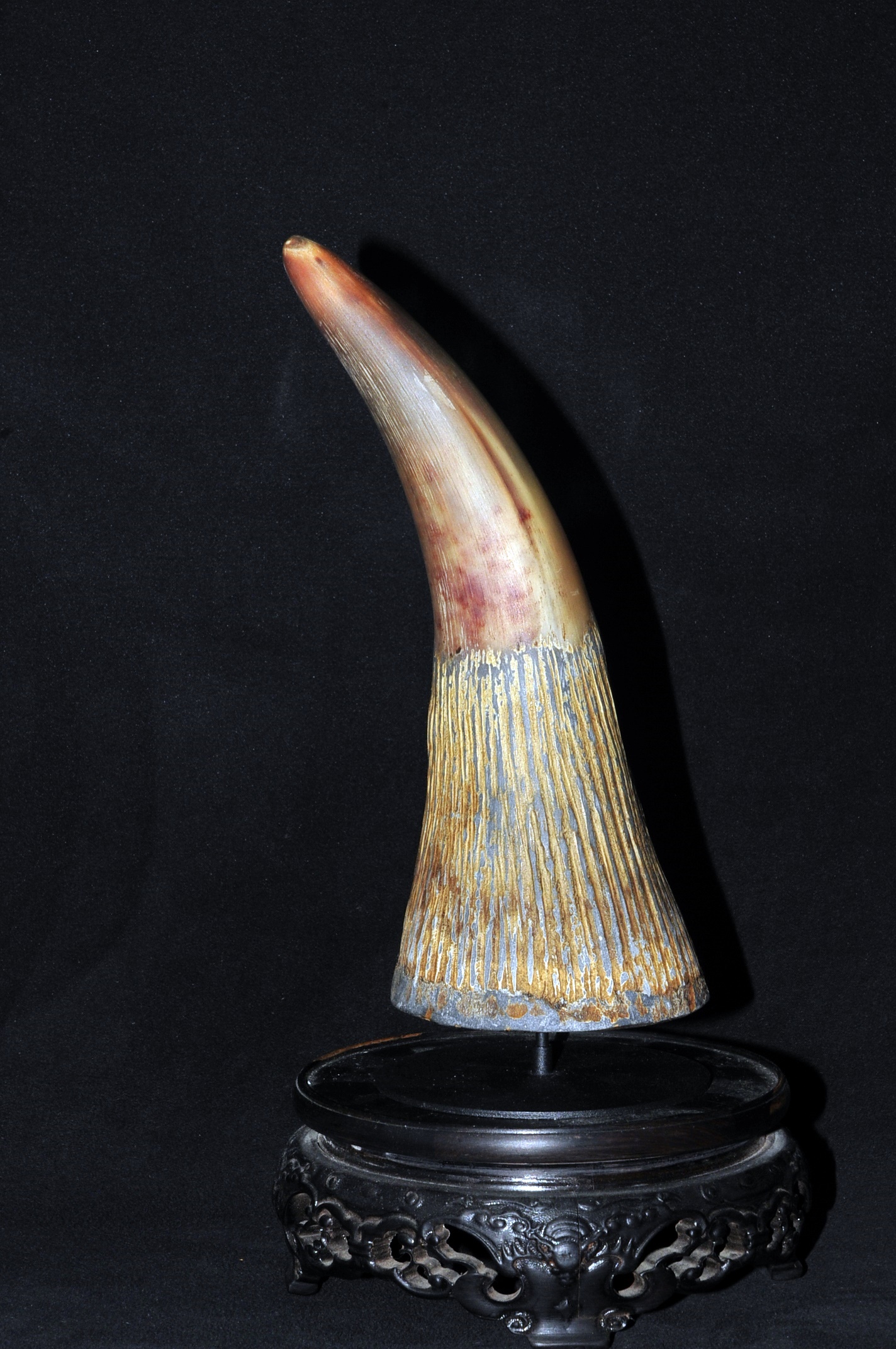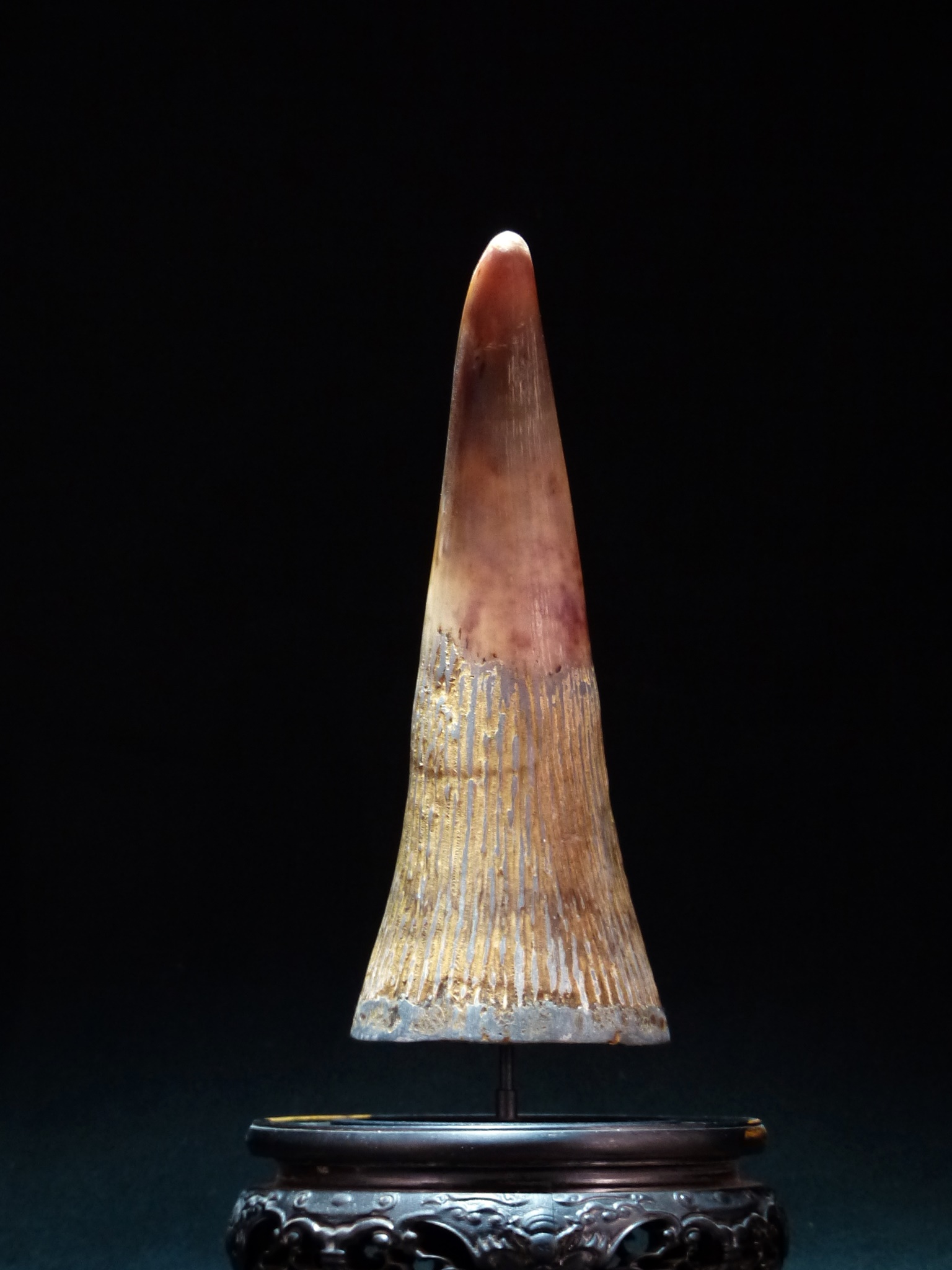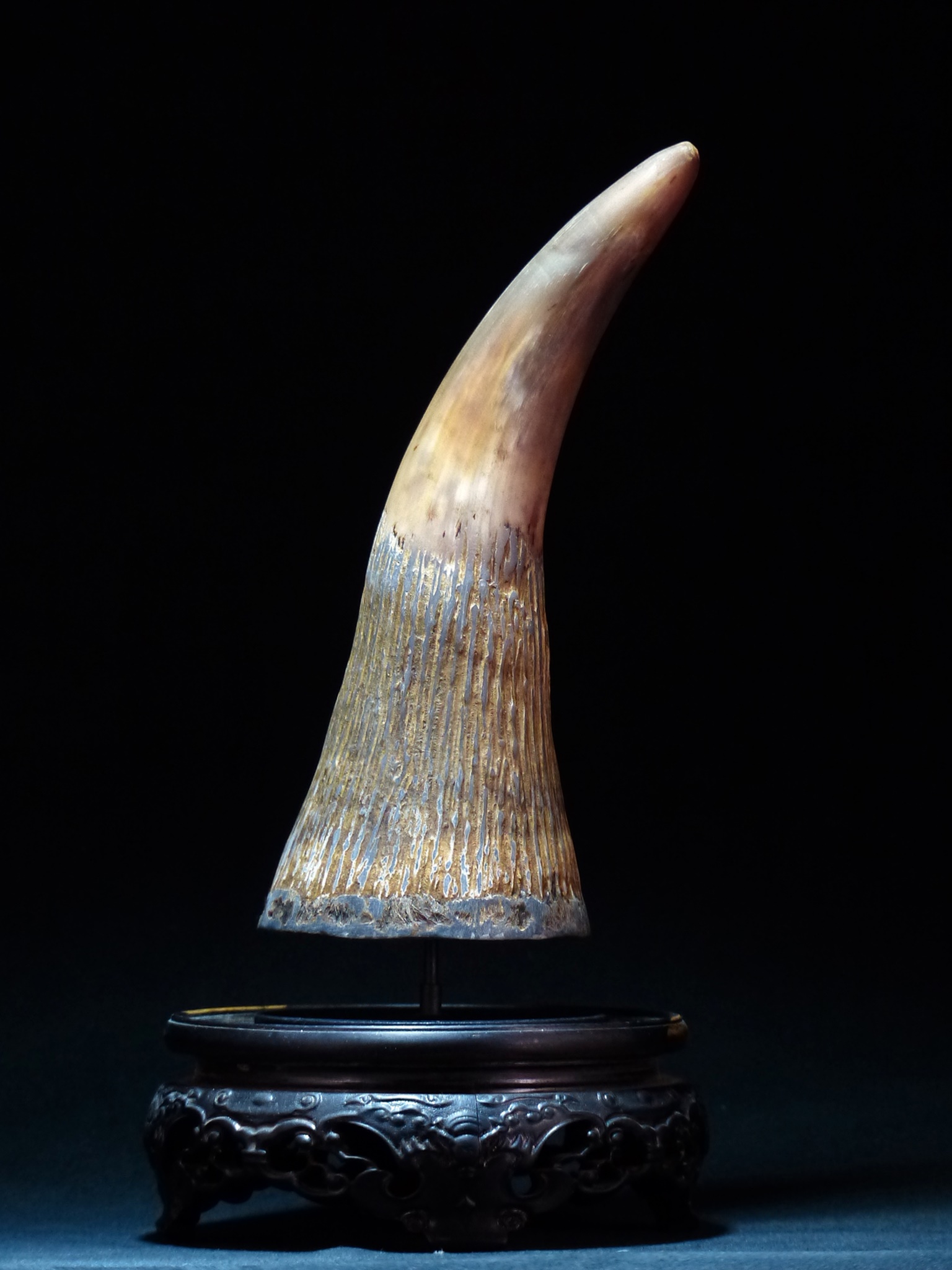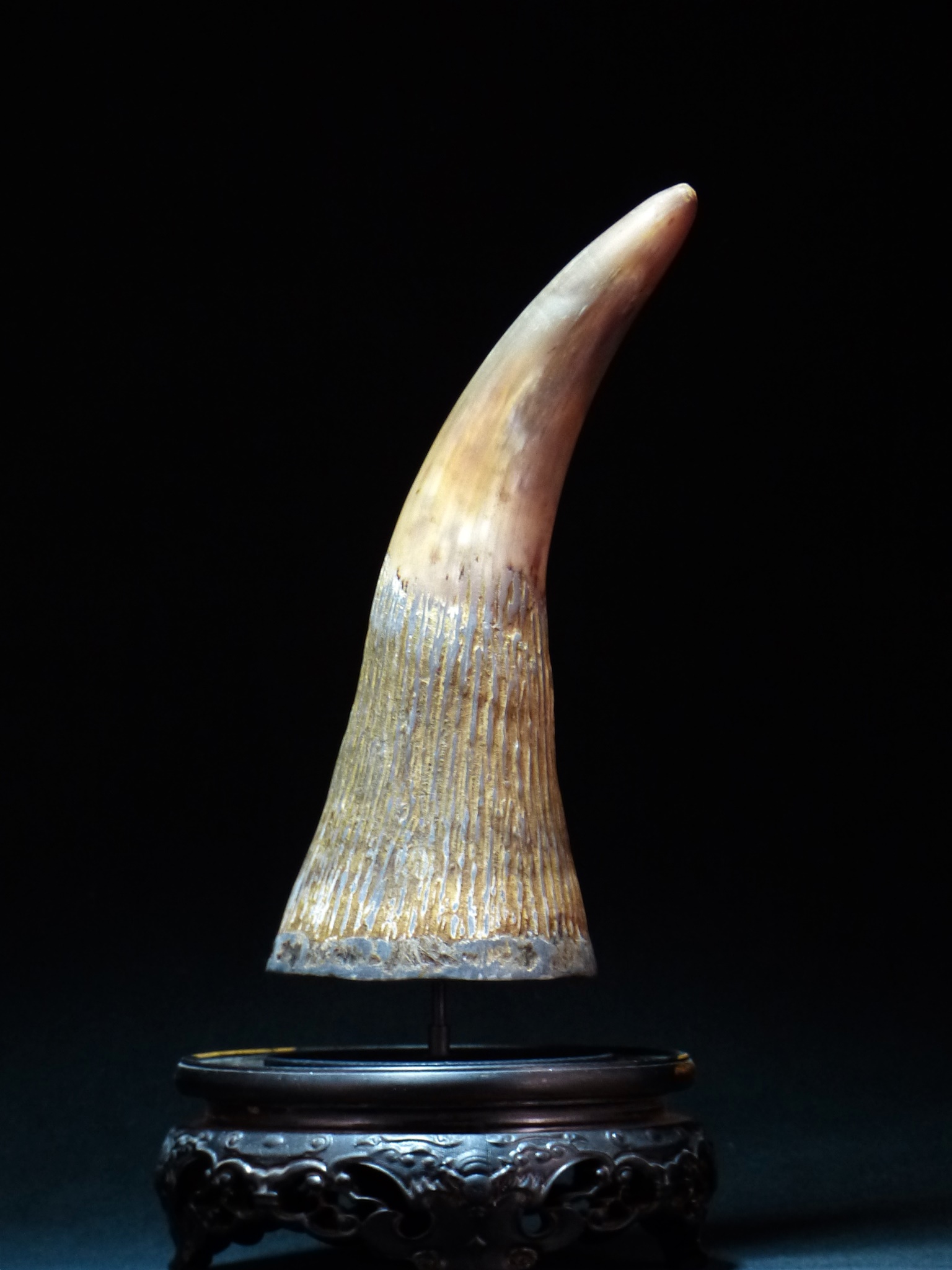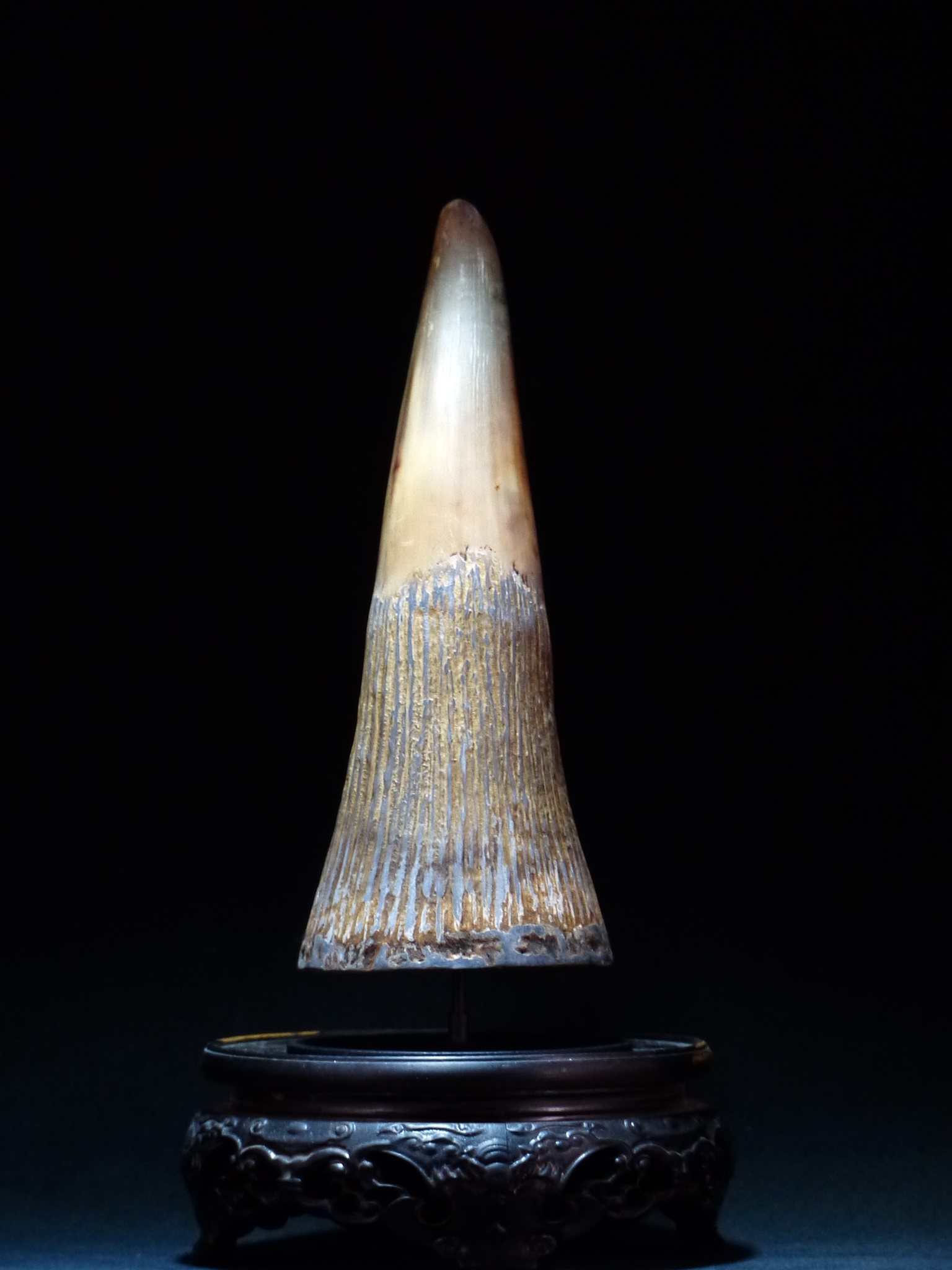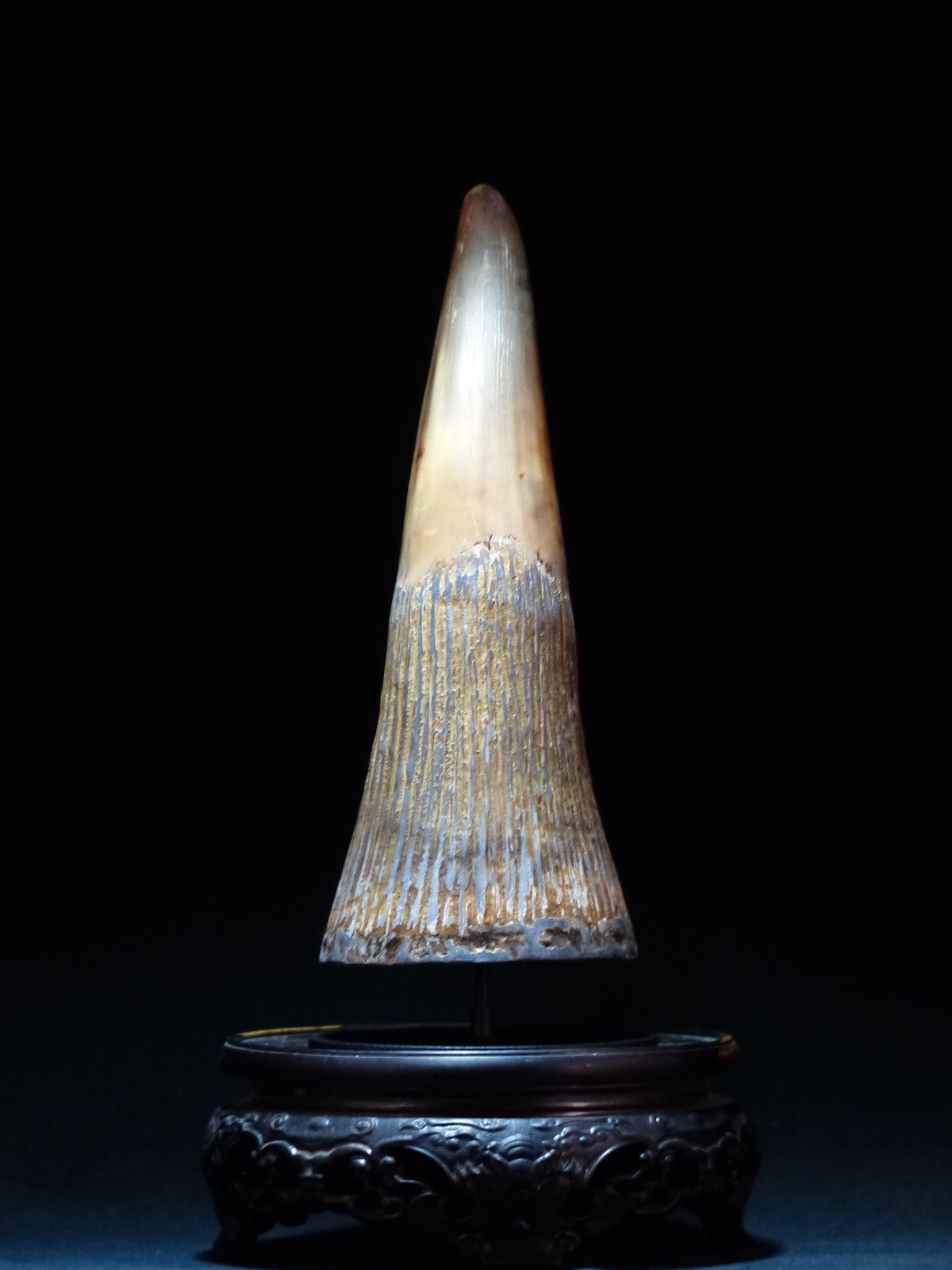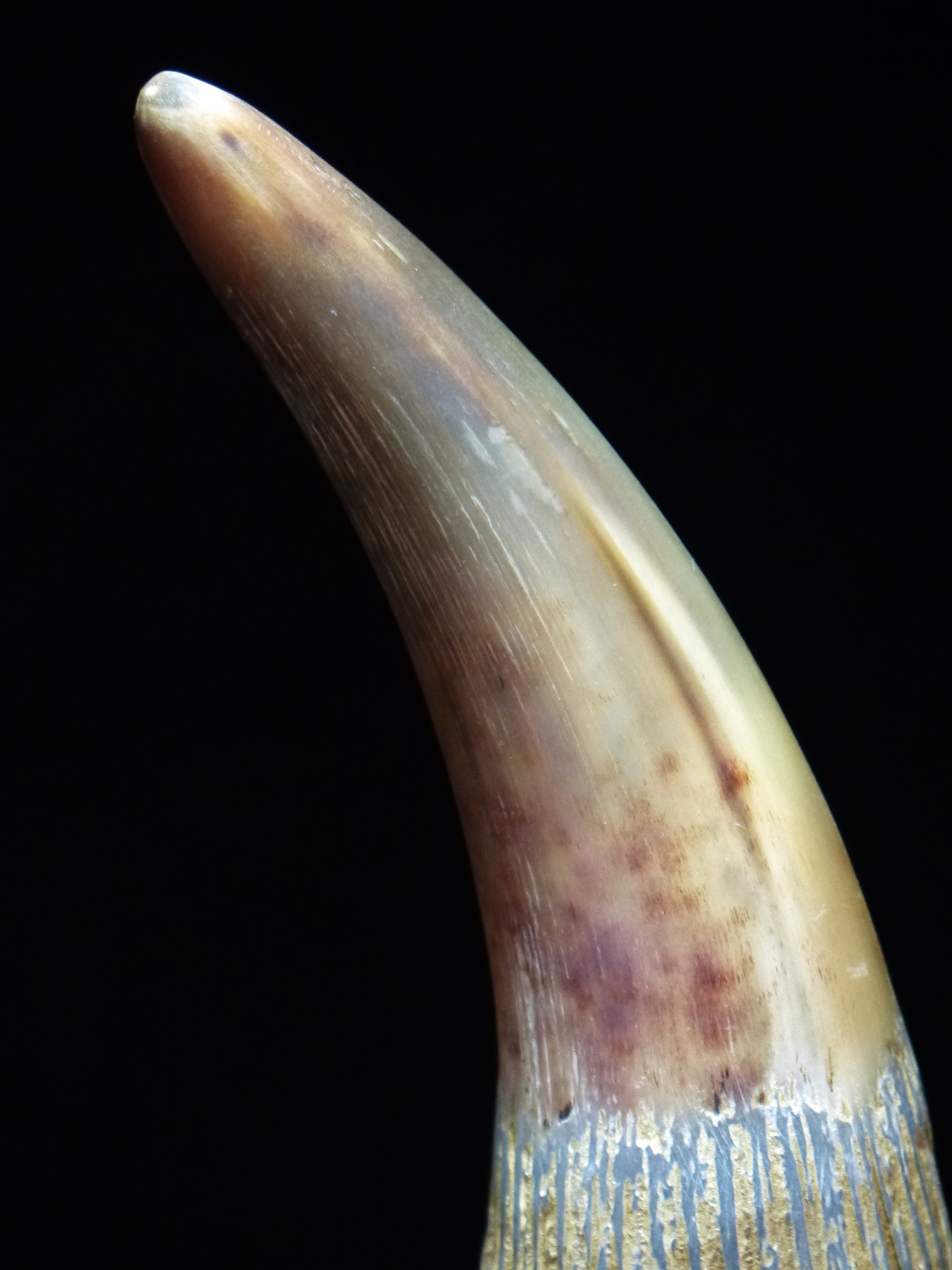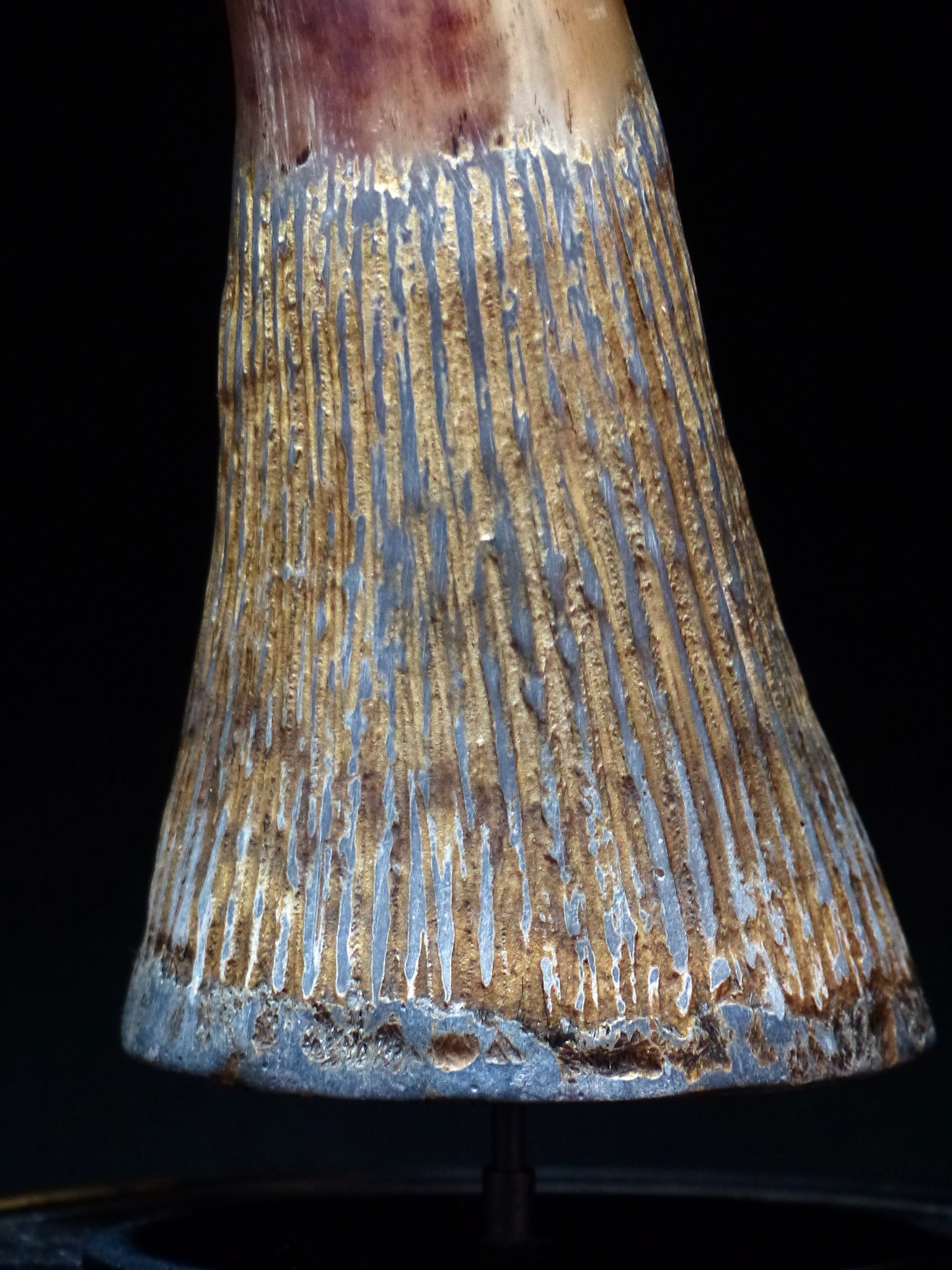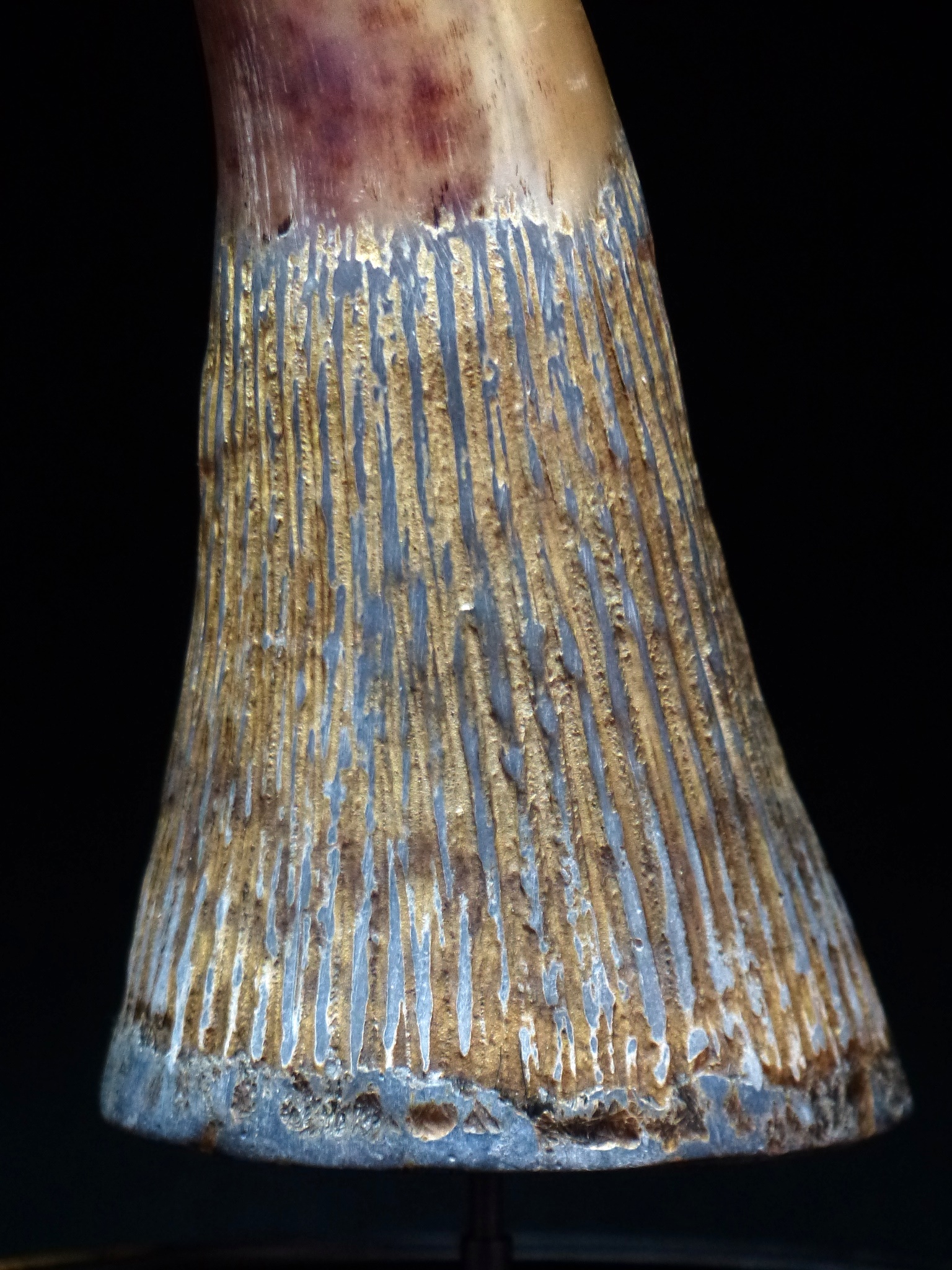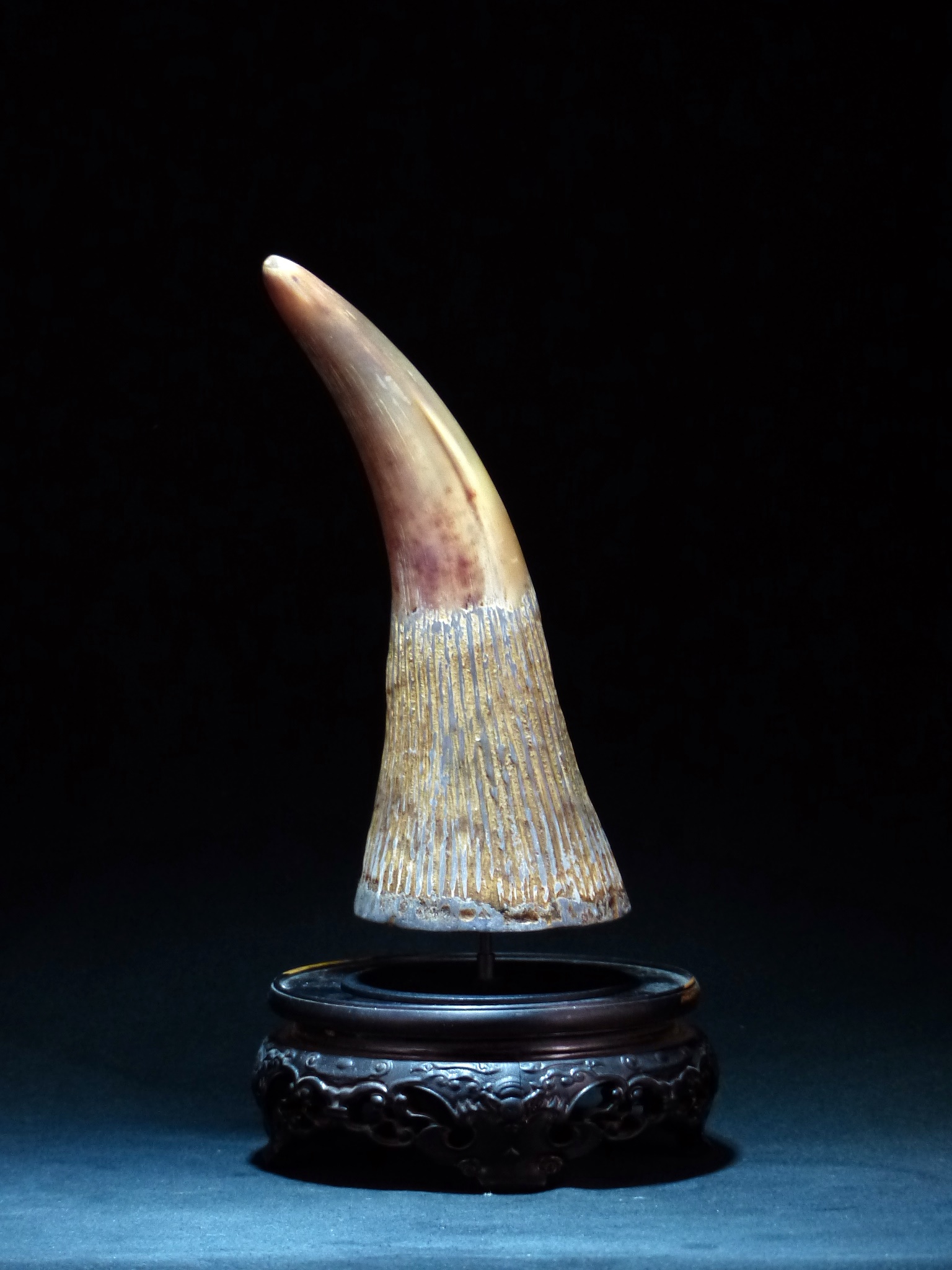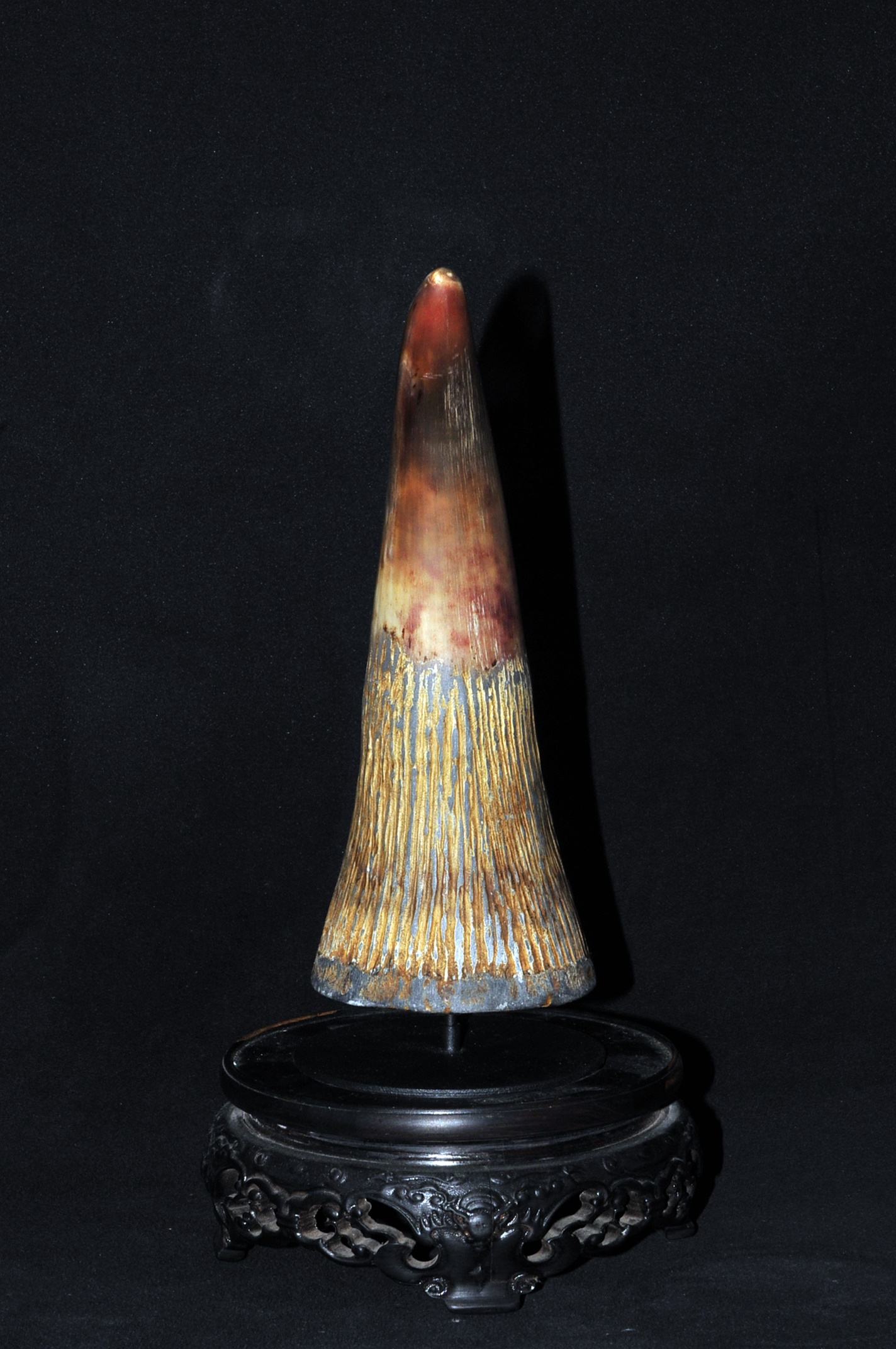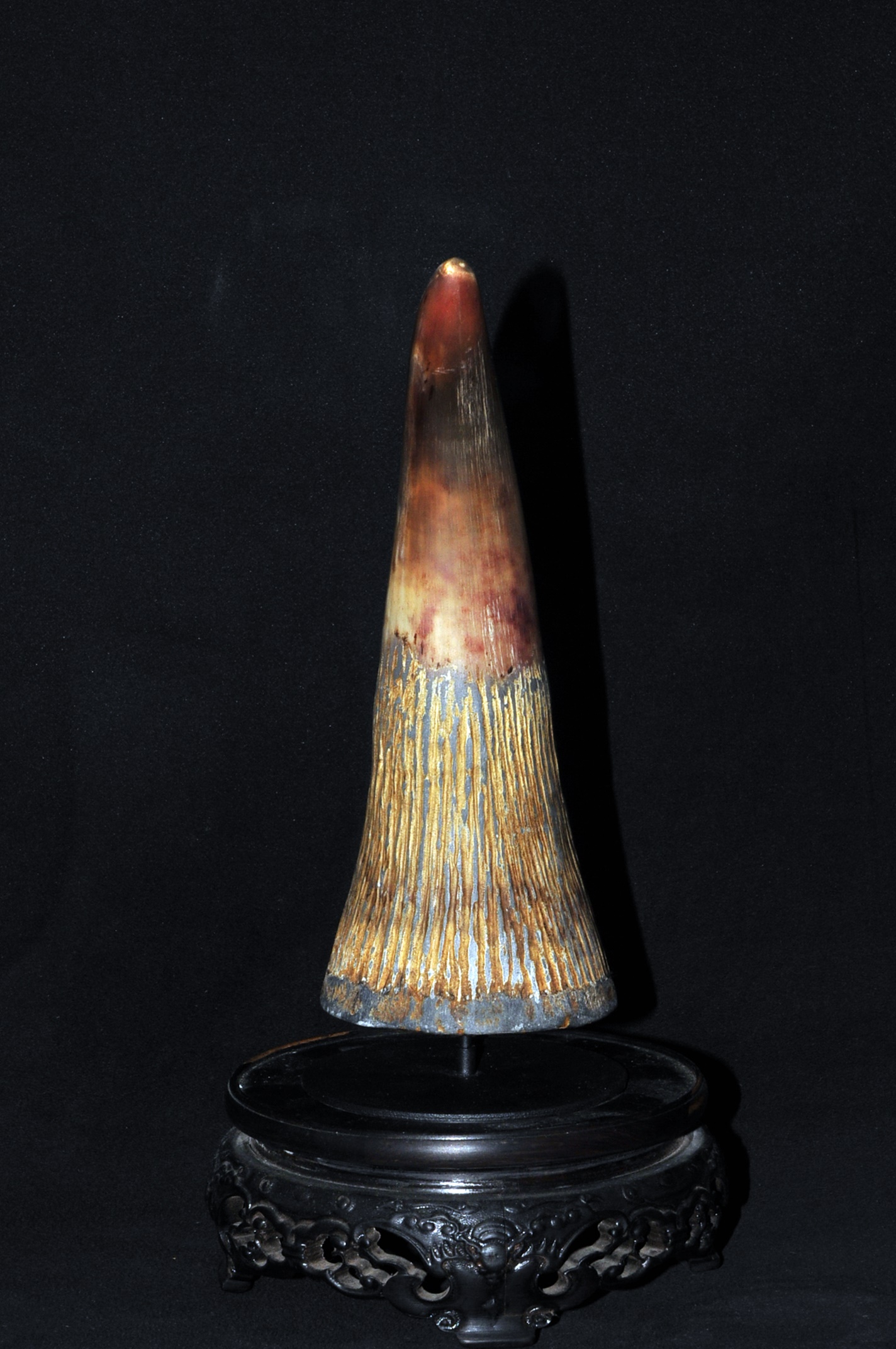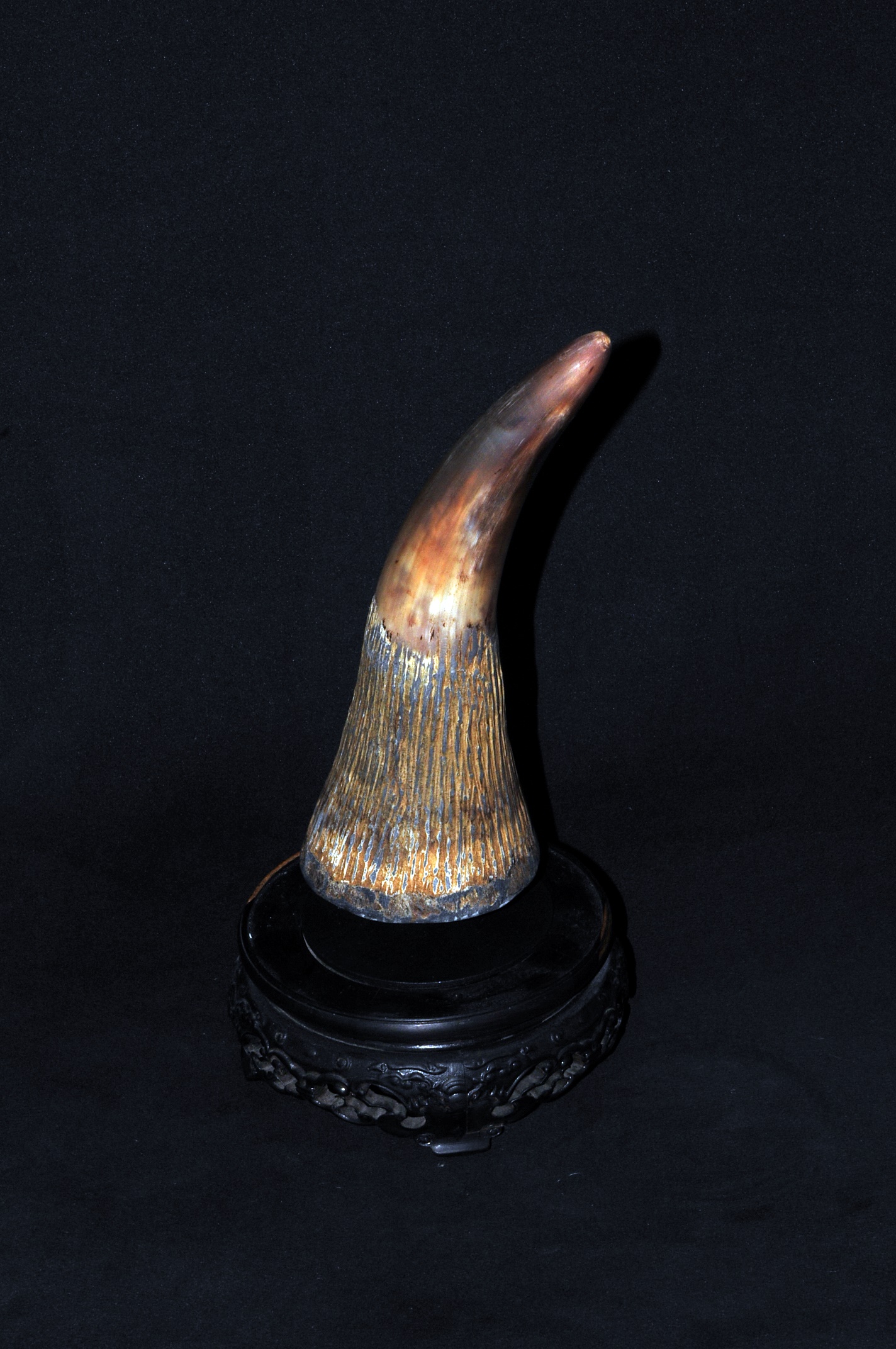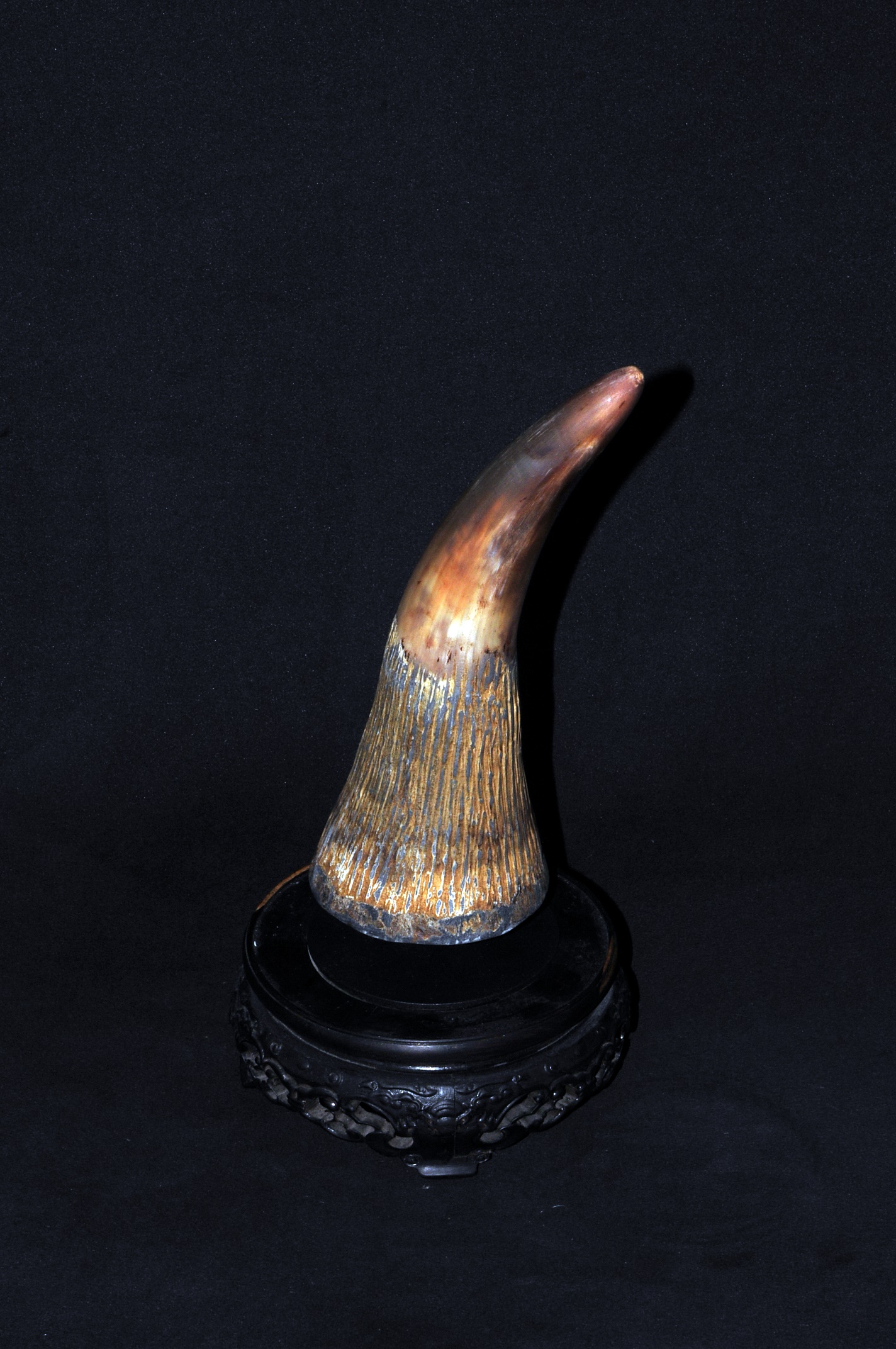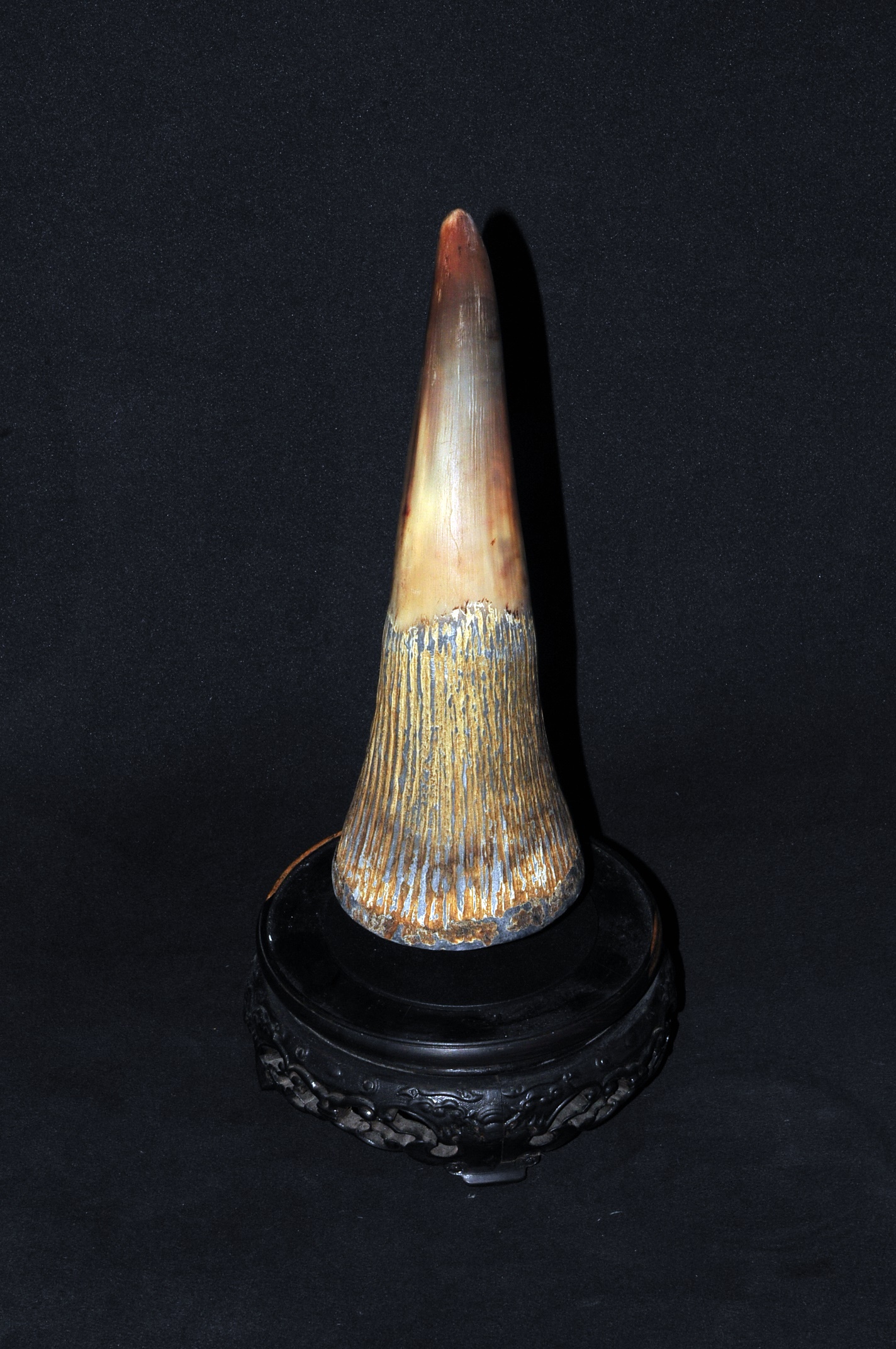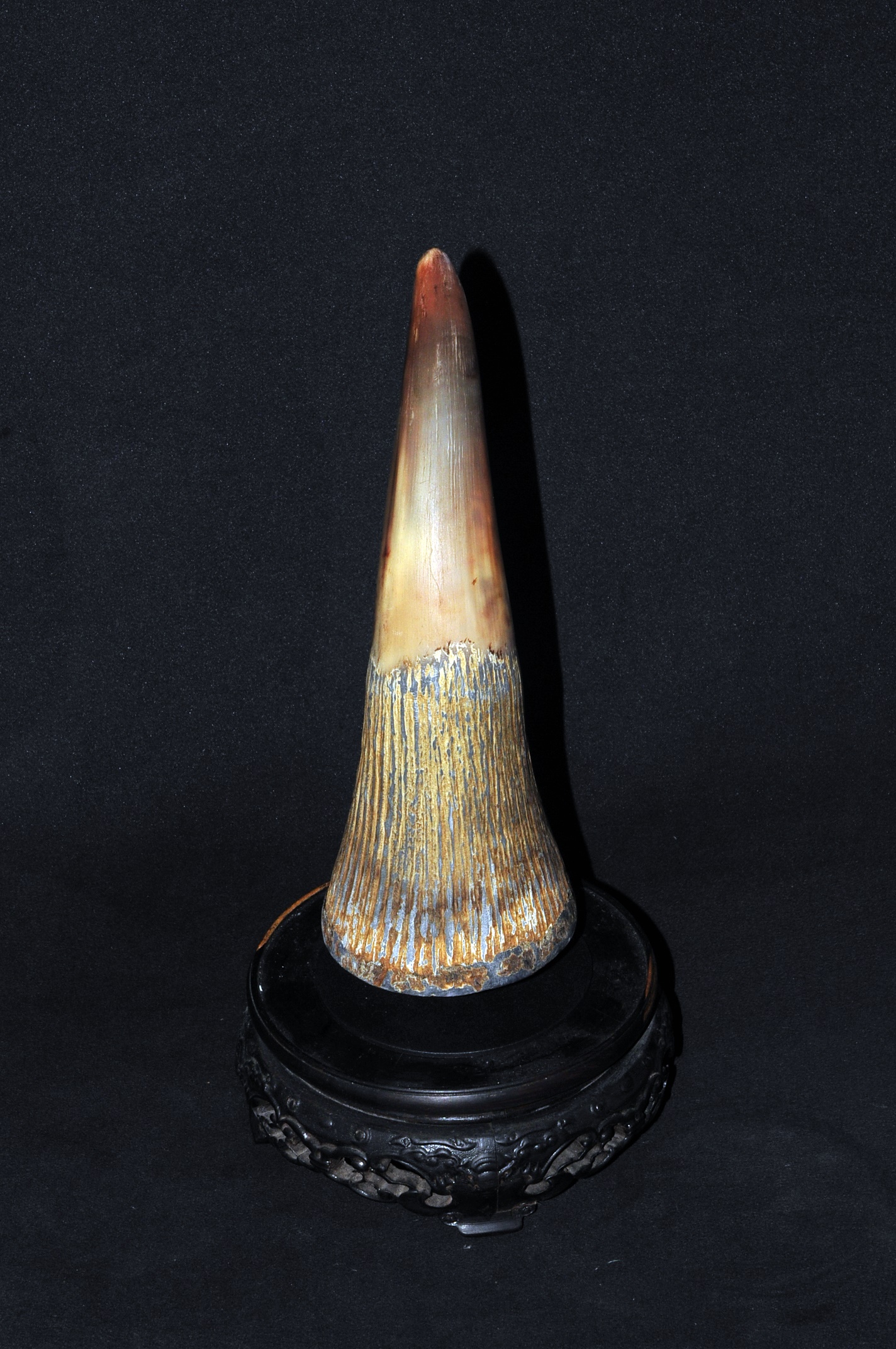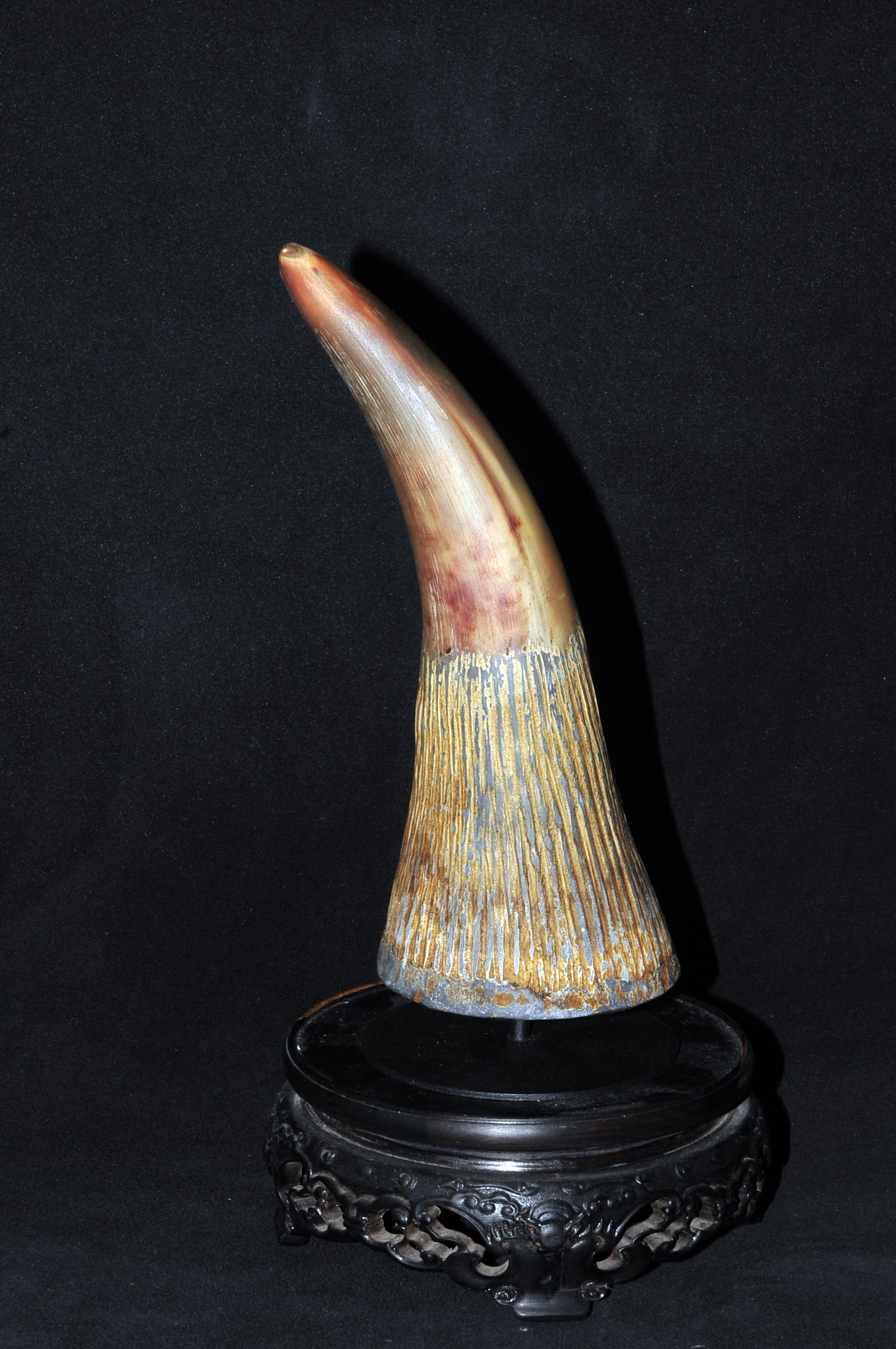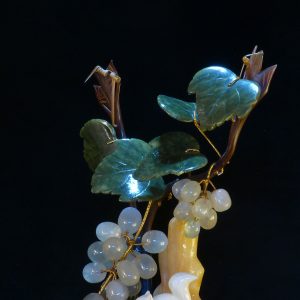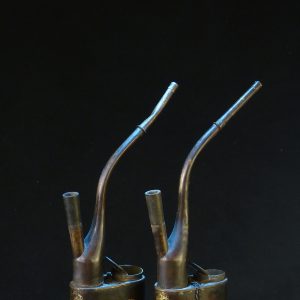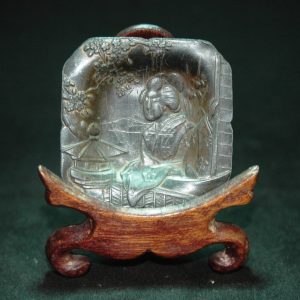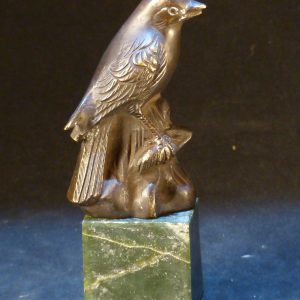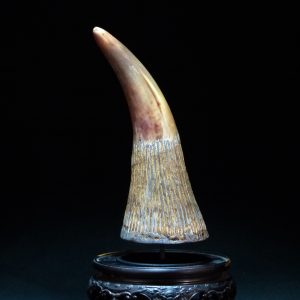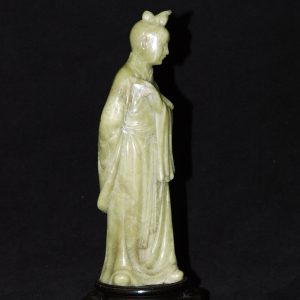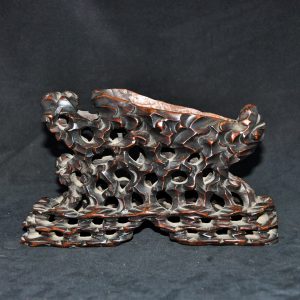Description
白犀牛角摆件

参考:黑犀牛角一对 Black Rhino
印度铁路总工程师C A Cooke 在东非度假的猎品
Kenya, Africa – Eastern Africa1920
Year: 1920
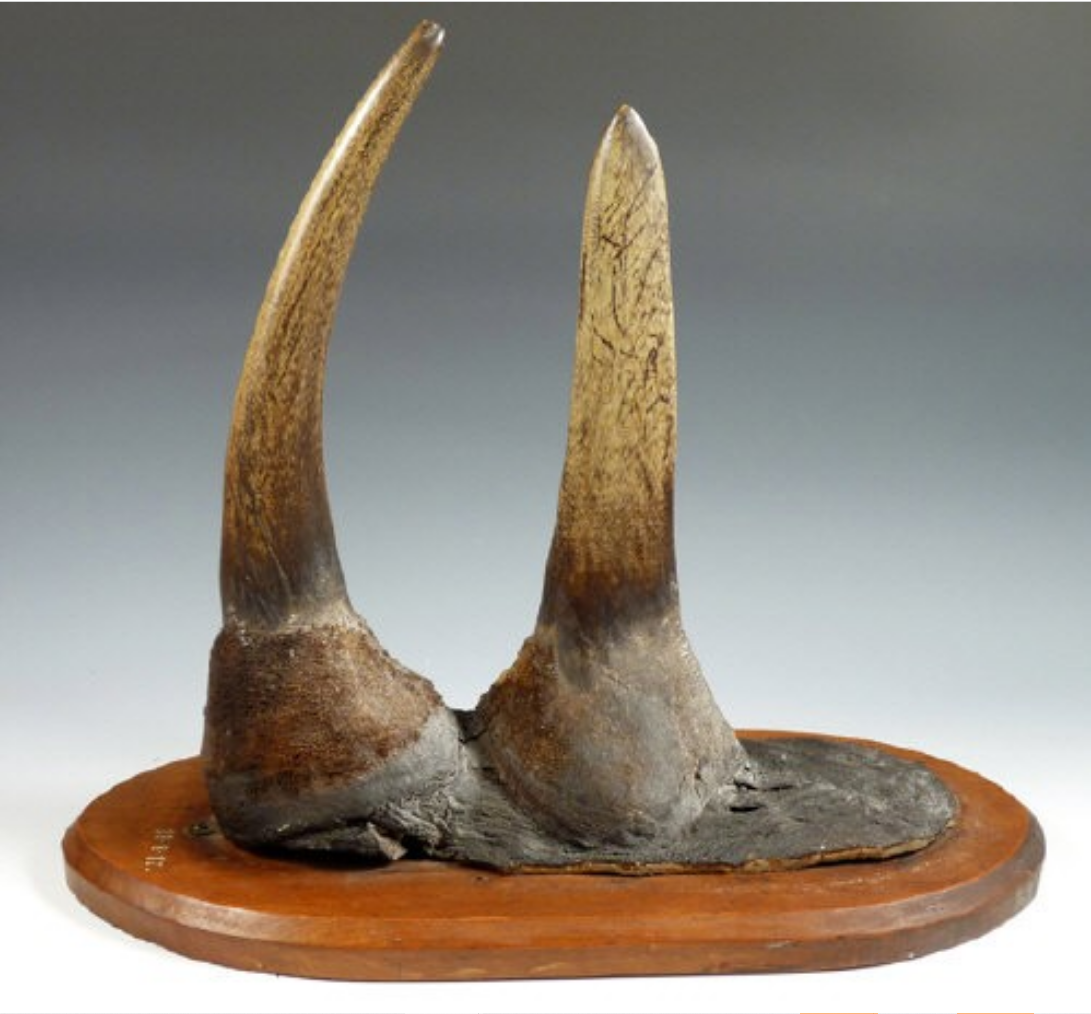
Description: Trophy specimen of rhinoceros sold at the Country House Sale, 22 Feb 2011 of Sworders Auctioneers in the United Kingdom. Item listed here for historical interest. Details from www.sworders.co.uk, accessed March 2011.
Lot 351. A pair of Black Rhinoceros (Diceros bicornis)horns, mounted on a wooden plaque, inscribed ‘18.8.17’, anterior horn approximately outer curve 46cm, base circumference 43cm posterior horn approximately outer curve 33cm, base circumference 45cm weight including shield 5kg. This specimen was shot by C A Cooke (1872-1958), Chief Engineer to the Indian Railway, during an East African vacation.
2011 年 2 月 22 日,英国 Sworders Auctioneers 的乡村别墅拍卖会上出售的犀牛标本。此处列出的物品具有历史意义。详细信息来自 www.sworders.co.uk,访问时间为 2011 年 3 月。
Lot 351。一对黑犀牛 (Diceros bicornis) 角,安装在木牌上,刻有“18.8.17”,前角外弧度约为 46 厘米,基部周长 43 厘米,后角外弧度约为 33 厘米,基部周长 45 厘米,包括盾牌的重量为 5 公斤。该标本由印度铁路总工程师 C A Cooke (1872-1958) 在东非度假期间猎获。
Hammer: £40000.00
Author: C.A. Cooke
参考 Rhino horn sells for small fortune at Vancouver auction with section of hide attached
连皮犀牛角在温哥华拍卖会上天价售出
A 19th century rhinoceros horn was estimated to sell for $20,000 at a recent auction. But a “grand battle” erupted between four Asian bidders and when the smoke cleared, it had sold for $228,000. Normally, high-priced antiques are cherished as objects. But rhino horns can be worth a small fortune because they’re used in traditional Chinese medicine and some people believe they’re an aphrodisiac.
在最近的一次拍卖会上,一只 19 世纪的犀牛角估价为 20,000 美元。但四位亚洲竞标者之间爆发了一场“大战”,当硝烟散去时,犀牛角以 228,000 美元的价格售出。通常,高价古董被视为珍品。但犀牛角却价值不菲,因为它们用于传统中药,有些人认为它们是一种壮阳药。
Author:By John Mackie
Published Nov 26, 2015

This rhinoceros horn was auctioned for $228,000 at Maynard’s in Vancouver on Nov. 21. It is believed to date to the 19th century. For a John Mackie story in The Vancouver Sun.
This rhinoceros horn was auctioned for $228,000 at Maynard’s in Vancouver on Nov. 21. It is believed to date to the 19th century. For a John Mackie story in The Vancouver Sun.
A 19th century rhinoceros horn was estimated to sell for $20,000 at a recent auction. But a “grand battle” erupted between four Asian bidders and when the smoke cleared, it had sold for $228,000.
Normally, high-priced antiques are cherished as objects. But rhino horns can be worth a small fortune because they’re used in traditional Chinese medicine and some people believe they’re an aphrodisiac.
Hugh Bulmer of Maynard’s, which sold the horn on Nov. 21, believes it will be ground up.
“I assume they’re grinding it up to make potions,” Bulmer said.
“Whether they work or not, I don’t know. I hope they do, at that sort of price.”
Bulmer said the horn came from an estate on Bowen Island. The family could show provenance that went back a couple of generations, which was key to being able to sell it.
Rhinos are an endangered species, and the sale of rhino horns has been banned in Canada since 1975, unless a seller can demonstrate the horn is older than that.
An international ban on the sale of modern rhino horns has raised their value. A 2014 BBC story said that in Vietnam, black market vendors were selling 100 grams of rhino horn powder for $6,000.
The horn from Maynards was 4,989.5 grams, which could have a street value in Vietnam of approximately $300,000.
Melissa Carr, a registered doctor of traditional Chinese medicine in Vancouver, said rhinoceros horn is in the Chinese pharmacopoeia, which lists all the ingredients used in traditional Chinese medicine.
“In Chinese medicine, the rhinoceros horn is called xi jiao,” she said. “They use it for fevers, and they say it helps to get rid of toxins and poisons. But there are other herbs that are replacements for it.”
She also said there’s a “folklore” that a rhino horn is an aphrodisiac “because of it’s shape.”
But she doesn’t know of any studies that show it’s of any use.
“There’s not enough evidence to show it’s effective,” she said. “So most modern-day Chinese herbalists wouldn’t even want to use it for medicinal reasons.”
Carr also thinks it would be illegal to prescribe it in Canada, because the rhino is an endangered species. That said, she does acknowledge it has an allure for some people.
“I think it’s kind of like shark fin,” she said.
“It’s a status thing. If you can afford to have a rhino horn or a shark fin, it’s more of a status thing than an effective (medicine or aphrodisiac).”
Carved rhino horns are coveted in the Chinese community as artworks — Maynards sold one a few years ago for $300,000. But the horn at Maynards wasn’t carved, it was natural, which may spell its demise.
Any kind of rhino horn is hard to find, at least legally.
“The market is closing down,” Bulmer said.
“The world of selling these things is becoming narrower and narrower, and fewer and fewer people are selling them. We’re almost certainly heading in the same direction. Unless something is carved and is an honest work of art, our days of selling these things are going.
“People’s attitudes are changing, but we’re still handling estates that have got these things.”
How do you know when a rhino horn is old, and not a modern fake? The provenance, and the patina.
“That’s the first question any of our purchasers will ask us, what’s the provenance,” Bulmer said.
“And then expertise comes into it. I’ve handled many pieces of 17th and 18th century carved Chinese ivory and rhino horns and that sort of thing. You know the style, you know the way it should look. The patination you should expect. The smell, even, is important when you’re looking at these things.”
What does a 19th century rhinoceros horn smell like?
“It’s like nutmeg,” said Bulmer. “It’s quite a distinctive smell.”
Maynards has done well with Asian antiques in recent years. In 2013, a Hong Kong collector spent $1.7 million on three pale jade vases. In 2012, the auction house sold a quartet of Chinese polychrome decorated wall plaques for $851,000.
参考:Cordy’s Antiques & Fine Art
Auckland 6-Oct-2015
A pair of old rhinoceros horns, from the one animal with…

A pair of old rhinoceros horns, from the one animal with section of hide attached. Length approx. 40 cm and 20 cm. Total weight 2.75kgs. Provenance: This pair of horns comes from a rhinoceros shot by Colonel J.H. Wright of the British Army, while in Kenya in the 1940’s. Colonel Wright was in Kenya to take part in the Abyssinian campaign. As a full time army personnel, Colonel Wright was called on at times to be an Assistant Game Manager
$24,239 (NZ$26,450)
一对老犀牛角,来自同一头犀牛,附皮。长度约 40 厘米和 20 厘米。总重量 2.75 公斤。
来源:这对角来自 20 世纪 40 年代英国陆军上校 J.H. Wright 在肯尼亚射杀的一头犀牛。Wright 上校在肯尼亚参加了阿比西尼亚战役。作为一名全职军人,Wright 上校有时被要求担任狩猎经理

![[临渊阁]天地一家春](https://www.antiquekeeper.ca/wp-content/uploads/2023/04/BW-Erping-1a-17-6-1.jpg)

